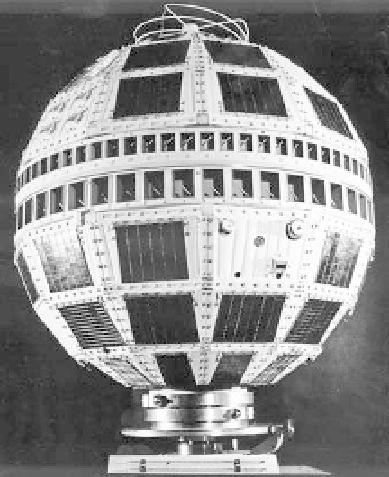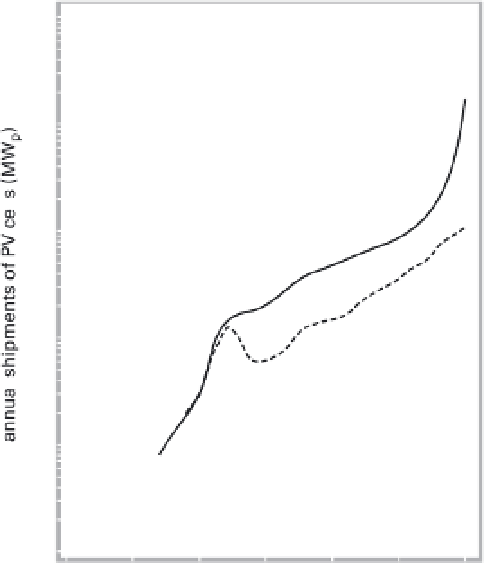Environmental Engineering Reference
In-Depth Information
9.6 (a) Telstar I, the world's first telecommunication satellite
powered by PV cells, was launched in 1962 (photograph
courtesy of Lucent Technologies). (b) Worldwide and U.S.
shipments of PV cells, 1980-2005 (plotted from data
published by the U.S. Energy Information Administration).
about 100 cm
2
), Hoffman Electronics had cells that were
9% efficient; it began selling 10% efficient cells a year later
(PVPRS 2001).
In 1962, Telstar, the first commercial telecommunica-
tions satellite, had 14 W of PV power (fig. 9.6), and two
years later Nimbus rated 470 W. PV cells became an
indispensable ingredient of the burgeoning satellite in-
dustry, but land-based applications remained uncommon
even after David Carlson and Christopher Wronski at
RCA Laboratories fabricated the first amorphous silicon
PV cell in 1976. After years of exaggerated expectations
and missed targets, global PV electricity generation fi-
nally began to expand exponentially during the late
1990s. In 1990 the worldwide shipments of PV cells
and modules were less than 50 MWp/a; by 2005 the to-
tal was just over 1.7 GWp/a (fig. 9.6). Solarex, Kyocera,
Sharp, and Siemens were the leading producers. Installed
capacity reached nearly 5 GWp worldwide, still only a
tiny fraction of more than 2.1 TW in fossil-fueled gener-
ators (BP 2006).
























